 W
WThe 1974 Tower of London bombing happened on 17 July 1974 with the explosion of a 10-14 lb bomb in the White Tower of the Tower of London. The blast left one person dead and injured 41 people, with many having lost limbs and suffering severe face injuries. The victim who lost her life was Dorothy Household. At the time the Tower was busy with tourists. A dozen of the injuries were children. A scaffolding company working on the tower at the time were able to act immediately to form the evacuation, ensuring the wounded were taken out of the building to safety and could gain urgent medical attention. The bomb was placed along a wooden carriage of an 18th-century bronze cannon inside the Mortar Room. The gun carriage was destroyed.
 W
WThe 1993 Camden Town bombing occurred on 27 February 1993, when a bomb exploded in Camden High Street, injuring 18 people. The Provisional IRA was responsible, planting the explosive in a litter bin and targeting people on the busiest day of the week, Saturday, after midday. One of the injured was Swedish tourist Jenny Erikson, 22. The IRA gave a coded telephone warning that a bomb was planted at a Kentucky Fried Chicken fast food store in the north end of High Street, near Camden Lock Market. Police unknowingly moved people towards the bomb's path in the south end 400 yards away. Scotland Yard chief Bernard Luckhurst said the misleading warnings of the bomb were "clearly designed" to kill or injure as many as it could. One eyewitness described scenes of "utter chaos".
 W
WAlavana or Alauna was a Roman fort in Britain, tentatively identified with the ruins at Watercrook about 2 mi (3.2 km) south of Kendal in Cumbria.
 W
WJohn Allnutt (1773–1863), was a British wine merchant and art collector. Alnutt was a patron of John Constable, J. M. W. Turner and Thomas Lawrence.
 W
WThe Anglo-Soviet Treaty, formally the Twenty-Year Mutual Assistance Agreement Between the United Kingdom and the Union of Soviet Socialist Republics, established a military and political alliance between the Soviet Union and the British Empire that was to last until the end of World War II or 20 years, whichever occurred later.
 W
WMartial Bourdin was a French anarchist, who died on 15 February 1894 when chemical explosives that he was carrying prematurely detonated outside the Royal Observatory in Greenwich Park, London.
 W
WGeneral Joseph Bridger was a military and political figure in the Colony of Virginia. Some sources relate him as "Colonel" (Col.) Bridger.
 W
WThe Brunswick star is an emblem which in outline is an eight-pointed or sixteen-pointed star, but which is composed of many narrow rays. It is used in the United Kingdom to surround the Royal Cypher on various badges, such as that worn on the caps and helmets of almost all police and fire services in England and Wales. The name Brunswick refers to the German Duchy of Brunswick-Lüneburg, better known as the principality of Hanover, which was ruled by the House of Hanover whose heads also became kings of Great Britain.
 W
WExe Island was the early industrial area of Exeter, England, and was an area of marshland between the city walls and the River Exe, reclaimed by the construction of a series of leats, or water courses, possibly from as early as the 10th century. Of these, the Higher Leat still exists. It created Exe Island, which was a separate manor belonging to the Courtenays, Earls of Devon.
 W
WFort Ashby is a historic stockade fort located in Fort Ashby, West Virginia, US. A military installation constructed during the French and Indian War, it is listed on the National Register of Historic Places.
 W
WGreat Rock Mine is a disused micaceous haematite mine about 3 km north of the town of Bovey Tracey in Devon, England. It was worked from the nineteenth century until 1969, and was the last active mine in the Dartmoor National Park area.
 W
WOn 20 April 1984, a bomb exploded in the baggage area of Terminal 2 at Heathrow Airport. The bomb exploded at 7:55 pm, as 60 people were inside the baggage area. Commander William Hucklesby, at the time head of Scotland Yard's anti-terror branch, reported that the detonated device was constructed using two pounds of commercial or military grade explosives. A hospital spokesperson stated that all but five victims were released shortly after being treated for minor scrapes, cuts and bruises.
 W
WThe history of Oxford in England dates back to its original settlement in the Saxon period. Originally of strategic significance due to its controlling location on the upper reaches of the River Thames at its junction with the River Cherwell, the town grew in national importance during the early Norman period, and in the late 12th century became home to the fledgling University of Oxford. The city was besieged during The Anarchy in 1142.
 W
WThe house of correction was a type of establishment built after the passing of the Elizabethan Poor Law (1601), places where those who were "unwilling to work", including vagrants and beggars, were set to work. The building of houses of correction came after the passing of an amendment to the Elizabethan Poor Law. However the houses of correction were not considered a part of the Elizabethan Poor Law system because the Act distinguished between settled poor and wandering poor.
 W
WIn Place of Strife was a UK Government white paper written in 1969. It was a proposed act to use the law to reduce the power of trade unions in the United Kingdom, but was never passed into law. The title of the paper was a reworking of the title of Nye Bevan's book In Place of Fear.
 W
WJordan Hill Roman Temple is a Romano-Celtic temple and Roman ruin situated on Jordan Hill above Bowleaze Cove in the eastern suburbs of Weymouth in Dorset, England. Original amateur excavations on the site in 1843, by J. Medhurst, were followed by a series of excavations in the 20th century suggesting that the site was in operation between c. AD 69–79 to the late 4th century.
 W
WCait or Cat was a legendary Pictish kingdom originating c. AD 800 during the Early Middle Ages. It was centered in what is now Caithness in northern Scotland. It was, according to Pictish legend, founded by Caitt, one of the seven sons of the ancestor figure Cruithne. The territory of Cait covered not only modern Caithness, but also southeast Sutherland.
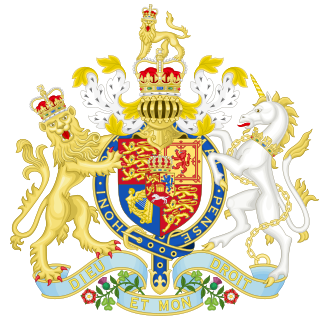 W
WThe Law Terms Act 1830 was an Act of the Parliament of the United Kingdom that made various changes to the court system of England and Wales.
 W
WThe Lawson Boom was the macroeconomic conditions prevailing in the United Kingdom at the end of the 1980s, which became associated with the policies of Margaret Thatcher's Chancellor of the Exchequer, Nigel Lawson.
 W
WLinenopolis was a nickname applied to the city of Belfast in the 19th century.
 W
WLittle Miss Barber was an advertising character for a number of brands of tea, including Barber's, Orantips and Twinings, in the English West Midlands, several examples of which remain visible on ghost signs in the region.
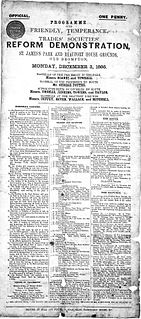 W
WThe London Working Men's Association was an organisation established in London in 1836. It was one of the foundations of Chartism. The founders were William Lovett, Francis Place and Henry Hetherington. They appealed to skilled workers rather than the mass of unskilled factory labourers. They were associated with Owenite socialism and the movement for general education.
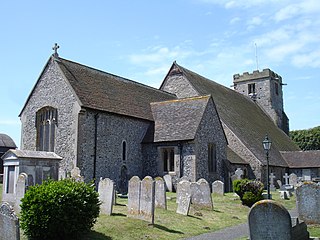 W
WLyminster Priory was a priory in Lyminster, West Sussex, England. It was a possible Saxon royal minster of Benedictine nuns and was founded or refounded about 1082AD by Roger de Montgomery, Earl of Sussex, who granted land to St. Peter's Abbey, Almenesches. The Priory was dissolved in about 1414AD and is now the Parish Church of St Mary Magdalene.
 W
WOram's Arbour was an enclosed settlement during the Iron Age, in what is now Winchester. Limited dating evidence suggests the enclosure was dug in the early-mid first century BC. The town wall of the Roman civitas capital of Venta Belgarum which succeeded the Iron Age settlement cut across its eastern end.
 W
WOtham Abbey was a medieval monastic house in Polegate, East Sussex, England.
 W
WThe Public Seal of Mandatory Palestine was a crown with the words "Palestine High Commissioner" underneath.
 W
WThe Ragged School Museum is a museum in the London Borough of Tower Hamlets. The museum was opened in 1990 in the premises of the former Dr Barnardo's Copperfield Road Ragged School. The school opened in 1877 to serve the children of Mile End with a basic education. It was the largest of its kind at the time. It closed in 1908 when sufficient government/London County Council schools had been established to take over the work. At its height the school had more than 1,000 pupils on weekdays, and 2,400 Sunday school attendees. The team continued to organise events for the local community even after the school closed. The building saw later use as a factory.
 W
WOn 10 December 1983 a bomb exploded at the Royal Artillery Barracks in Woolwich, South East London. The explosion injured five people and caused minor damage to the building. The bomb exploded in a guard room, leaving a crater 15 feet (4.6 m) deep. A Christmas party was underway in the Sergeants' Mess, around 300 yards (270 m) away, when the bomb exploded. The Scottish National Liberation Army claimed responsibility for the bombing, stating that "more will follow", although Scotland Yard believed that the IRA were behind the attack. The IRA later admitted responsibility for the attack.
 W
WSchool boards were public bodies in England and Wales between 1870 and 1902, which established and administered elementary schools.
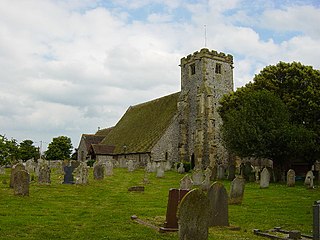 W
WThe Slayer's Slab is a title given to a medieval gravestone formerly in the graveyard of Lyminster church in West Sussex, England. It has now been moved inside the church to protect it from weathering. According to legend it is the gravestone of the dragonslayer who killed the Knucker who lived in the nearby knuckerhole. The stone has a cross on it overlaying a herringbone pattern, but no inscription to identify the tomb's occupant.
 W
WSteinacleit is a prehistoric archeological site on the west coast of Lewis in the Outer Hebrides of Scotland.
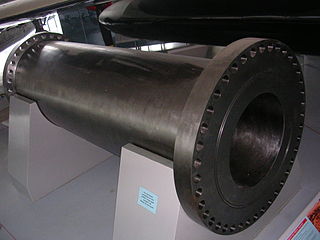 W
WThe "Supergun" affair was a 1990 political scandal in the United Kingdom that involved two businesses, Sheffield Forgemasters and Walter Somers, Gerald Bull, (then) members of parliament Hal Miller and Nicholas Ridley, the UK's Secret Intelligence Service, a failed prosecution, and components of a "supergun" that the businesses were alleged to have been exporting to Iraq that they and others had contacted the government about in 1988.
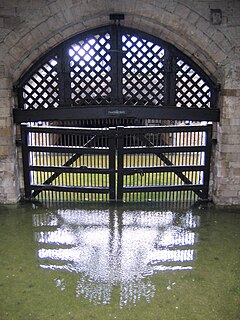 W
WThe Traitors' Gate is an entrance through which many prisoners of the Tudors arrived at the Tower of London. The gate was built by Edward I, to provide a water gate entrance to the Tower, part of St. Thomas's Tower, which was designed to provide additional accommodation for the royal family.
 W
WUlster Says No was the name and slogan of a unionist mass protest campaign against the provisions of the 1985 Anglo-Irish Agreement which gave the government of the Republic of Ireland an advisory role in the governance of Northern Ireland.
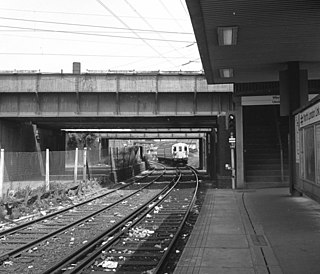 W
WThe West Ham station attack was a bombing and shooting attack at West Ham station in east London on 15 March 1976. A 5 lb bomb on a Metropolitan line train exploded prematurely in the front carriage of the train, injuring seven passengers. The bomb detonated prior to reaching the City of London, where it was thought the intended target was Liverpool Street station at rush hour. Adrian Vincent Donnelly, a Provisional Irish Republican Army (IRA) member, then shot Post Office engineer Peter Chalk in the chest, and killed train driver Julius Stephen, who had attempted to catch him. Donelly exited the station to the street and threatened people with his revolver before PC Raymond Kiff caught up with him. Shouting "You English bastards!", Donelly shot himself in the chest, but he survived and was apprehended by Kiff.
 W
WWinwick is a small village, a lost settlement and civil parish in the Daventry district of the county of Northamptonshire in England. The modern settlement is north of West Haddon. A 16th-century brick manor house remains on the site. The population is included in the civil parish of West Haddon.